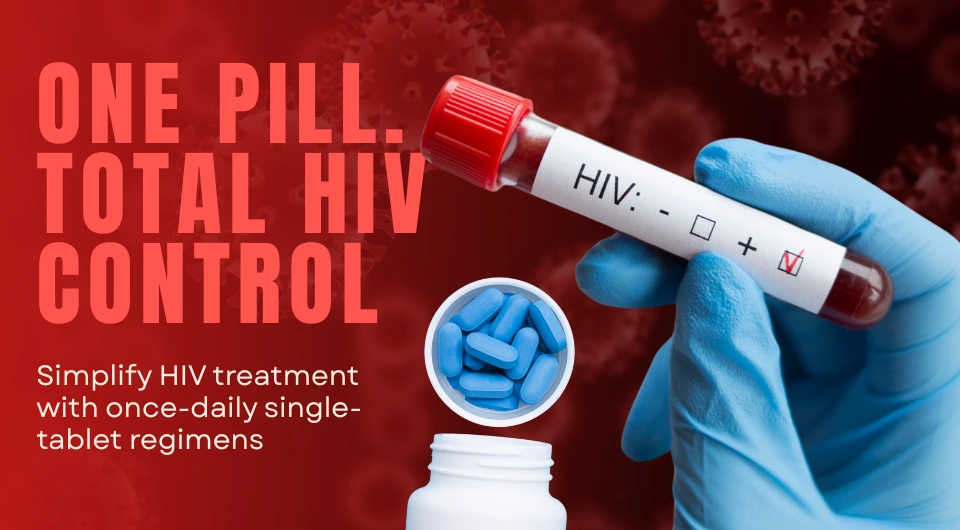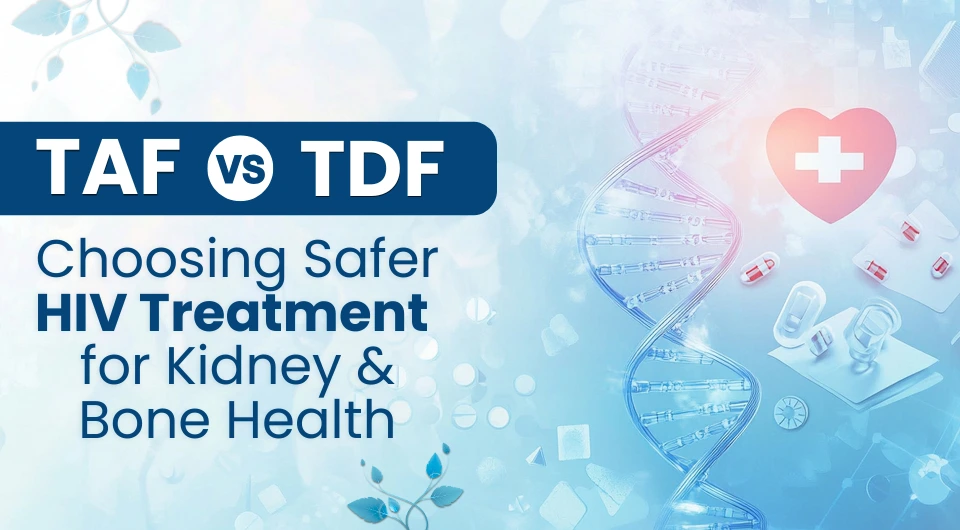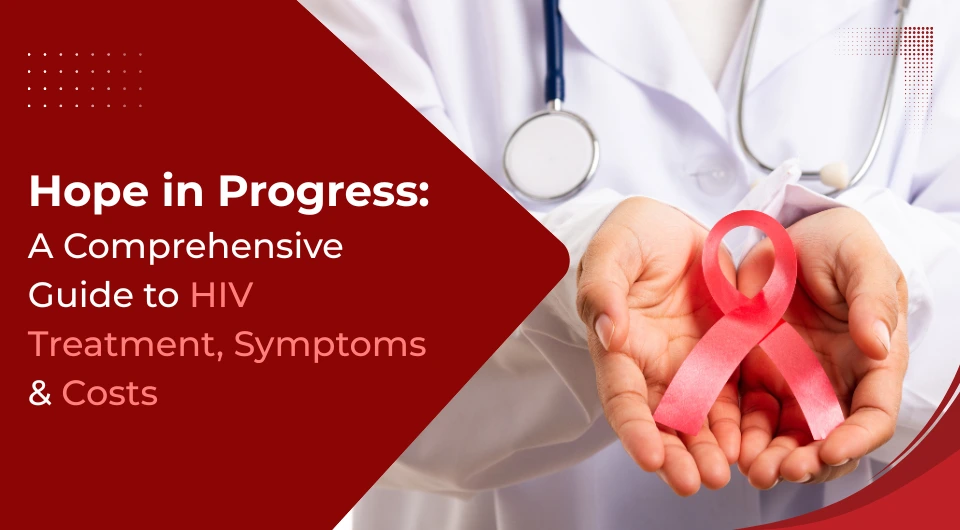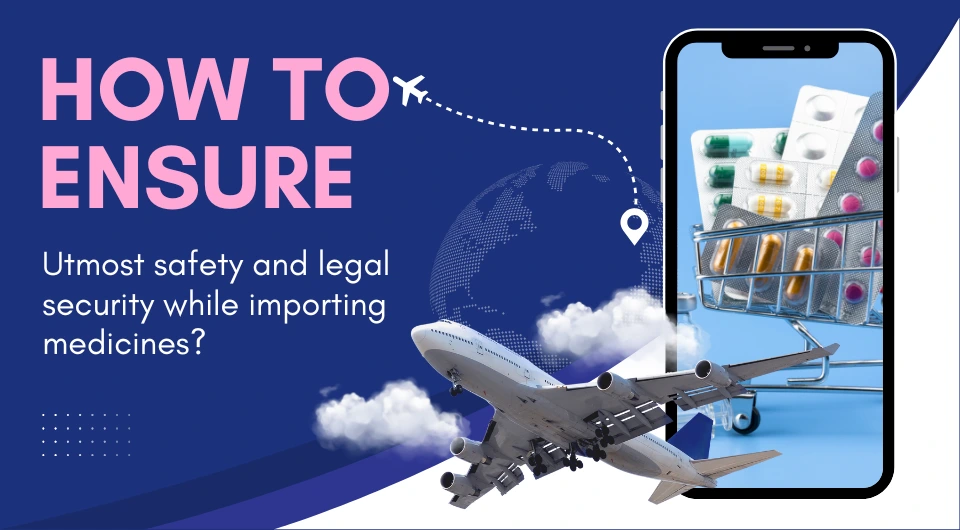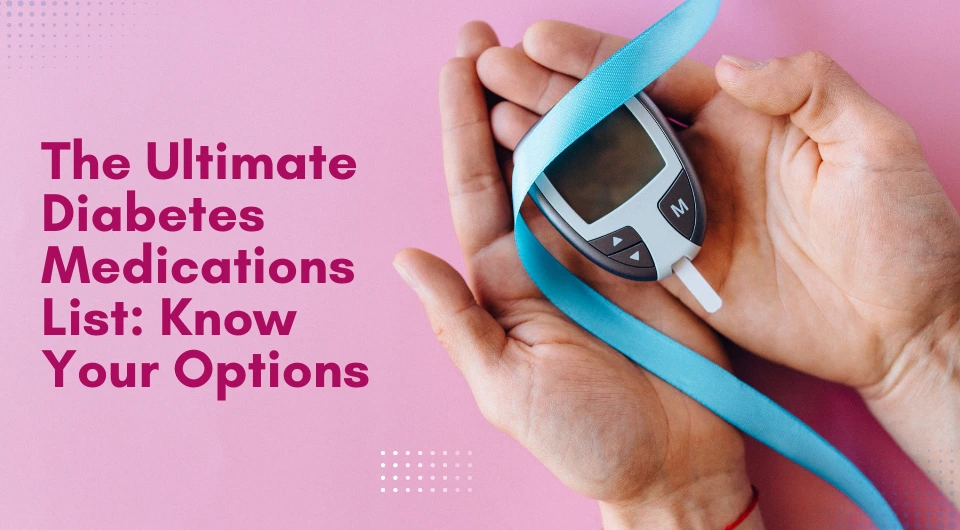Navigating the landscape of diabetes management requires a comprehensive understanding of the diverse array of available medications, each essential for regulating blood sugar levels and preventing problems. With the help of this guide, “The Ultimate Diabetes Medications List: Know Your Options,” we hope to dispel any confusion surrounding the world of diabetes drugs.
This article is your compass whether you are looking into type 2 diabetes treatment alternatives, inquiring about the newest advancements, or needing advice on managing a specific problem. Come along as we explore a plethora of knowledge, equipping you with the ability to make decisions clear to your requirements. It’s time to explore the complexities and opportunities that the field of medication for diabetes offers, providing a guide for efficient and personalized diabetes care.
3 Types of Diabetes Medications: Getting Around the Treatment Landscape
Diabetes management is a complex process, and the realm of diabetes medications provides a wide range of tools for people who are trying to keep their blood sugar levels at ideal ranges. Understanding the types of medications is crucial as they play a key role in attaining efficient control. Let’s investigate the many approaches, each adding something special to the orchestra of diabetes treatment.
-
Oral Diabetes Medications
Oral medications form a cornerstone in the treatment of diabetes, particularly in type 2 diabetes. These medications come in the form of pills or tablets designed to be taken orally. They are essential for raising insulin sensitivity, decreasing hepatic glucose synthesis, and increasing cellular absorption of glucose. Common oral medications include jardiance 25 mg, semaglutide, metformin 500 mg, sulfonylureas, meglitinides, and DPP-4 inhibitors.
-
Injectable Diabetes Medications
An alternate method of administering diabetes treatment directly to the body is by injecting drugs. To have a more noticeable effect right away, these injections are usually given into a muscle or under the skin. When oral treatments are unable to provide the best blood sugar control, injectable drugs are frequently advised. Amylin analogs, insulin, semaglutide injection, and GLP-1 receptor agonists are all included in this category.
In addition to the traditional injectable and oral drugs, there are also novel approaches to managing diabetes. For people who dislike injections, inhalable insulin, for instance, offers an option. Furthermore, new technologies are still being investigated for patches and implantable devices, which could open up new possibilities for accurate and reliable drug delivery.
Essentially, the diversity of diabetes medications reflects the particular requirements of every person. The objective of attaining and sustaining ideal blood sugar management is the same, regardless of the appeal of oral tablets, injectables, or developing technology. When we go into the details of each kind, it becomes evident that the variety of diabetic drugs is a strategic approach to individualized care rather than just a question of form.
Type 2 Diabetes Medications List: A Closer Look at Typical Choices
Managing type 2 diabetes requires a customized approach, and developing an efficient treatment strategy requires a thorough awareness of the variety of drugs available. Here, we examine the uses, advantages, and drawbacks of several of the popular type 2 diabetes drugs.
Metformin 500 mg
Diabetes Medication Metformin is one of the most important drugs for treating type 2 diabetes. Being a biguanide, it raises insulin sensitivity, decreases hepatic glucose synthesis, and increases cellular absorption of glucose.
Dosage and Usage
To reduce adverse effects, metformin doses are usually started at lower levels and then progressively increased. It is usually taken with food to improve absorption.
Metformin Side Effects
Metformin, despite being generally well taken, has the potential to produce gastrointestinal problems such as nausea and diarrhea. Over time, these symptoms frequently go away.
Metformin Cost
Metformin is renowned for its affordability, making it a cost-effective choice for many individuals.
Metformin for Prediabetes
Diabetes medication metformin is sometimes prescribed for individuals with prediabetes to lower the risk of progressing to type 2 diabetes. It helps control blood sugar levels and enhance insulin sensitivity in those at increased risk.
Critical precautions and actions associated with metformin:
| Condition or Situation |
Action Required |
| Severe kidney disease, metabolic acidosis, or diabetic ketoacidosis |
Do not use metformin; consult your doctor for appropriate treatment. |
| Need for x-ray or CT scan with dye injection |
Temporarily stop taking metformin as advised by your healthcare provider. |
| Symptoms of lactic acidosis (e.g., unusual muscle pain, difficulty breathing, stomach pain, dizziness, feeling cold, weakness or fatigue) |
Seek immediate medical help; contact your doctor promptly. |
Jardiance (Empagliflozin)
Jardiance medication is a member of the SGLT-2 inhibitor drug class, which decreases the kidneys’ ability to reabsorb glucose, increasing the amount of glucose excreted in urine.
Benefits and Considerations
Diabetes patients with reduced blood sugar levels and improved cardiovascular health can experience a decreased risk of cardiovascular events when using Jardiance. It is especially helpful for people who have heart-related issues.
Jardiance Cost
Jardiance medication’s overall value is enhanced by its cardiovascular benefits, even though it is typically more expensive than certain older diabetes drugs.
Critical precautions and actions associated with Jardiance (Empagliflozin):
| Condition or Situation |
Action Required |
| Severe kidney disease |
Avoid using Jardiance. |
| Diabetic ketoacidosis |
Do not use Jardiance |
| Dehydration or volume depletion |
Correct fluid imbalance before starting Jardiance. |
| Hypotension (low blood pressure) |
Monitor blood pressure regularly; adjust treatment as needed. |
| Genital yeast infections |
Seek medical advice if symptoms persist or worsen. |
| Symptoms of ketoacidosis (e.g., nausea, vomiting, abdominal pain) |
Seek medical attention promptly; discontinue Jardiance if ketoacidosis is suspected. |
| Signs of acute kidney injury (e.g., decreased urine output, swelling in legs) |
Contact the healthcare provider immediately. |
Semaglutide
Semaglutide is a novel drug in the class of GLP-1 receptor agonists used to treat diabetes. Its administration options are flexible because it comes in injectable and oral versions.
Key Features
GLP-1 Agonist Properties: Semaglutide tablets increase the function of GLP-1, an endogenous hormone that inhibits glucagon synthesis, promotes insulin release, and slows down stomach emptying.
Weekly Injectable or Daily Oral Formulation: Depending on the prescription form, semaglutide can be given orally once a day or as a once-weekly injection using a pen device.
Blood Sugar Control: Semaglutide complements diabetes management techniques because of its well-known ability to control blood sugar levels.
Dosage and Usage
Semaglutide Injectable Form: The suggested dosage for the injectable type is usually once per week. It is applied subcutaneously, and the dosage can be changed according to each person’s requirements and reaction.
Semaglutide Oral Form: The oral formulation can be taken with or without meals once a day, preferably in the morning. Consistent administration is essential for the best effects.
Semaglutide Cost?
Affordability Considerations: Semaglutide may be more expensive than specific conventional diabetic treatments. Its distinct advantages, such as the possibility of weight loss, can add to its total worth.
Semaglutide Weight Loss Diabetes Medication
Semaglutide is a novel weight loss diabetes medication first created as a GLP-1 receptor agonist to help control diabetes. Its ability to help people lose weight has generated much interest among those looking for all-encompassing methods of managing their diabetes and the medical community.?
Action Mechanism
Semaglutide affects hunger and satiety, which in turn affects weight reduction. It is a GLP-1 receptor agonist that slows stomach emptying, decreases glucagon release, and increases insulin synthesis. The benefits include improved blood sugar regulation, reduced appetite, and heightened feelings of fullness.
Side Effects
Gastrointestinal Effects: Symptoms like diarrhea and nausea are common. These symptoms usually go away, but you should talk to a doctor if they don’t.
Monitoring: Routine monitoring is essential for evaluating the medication’s effectiveness and managing any potential side effects to ensure a well-rounded and well-tolerated course of therapy.
Critical precautions and actions associated with Semaglutide:
| Condition or Situation |
Action Required |
| Personal or family history of medullary thyroid carcinoma (MTC) |
Do not use Semaglutide. |
| Multiple endocrine neoplasia syndrome type 2 (MEN 2) |
Do not use Semaglutide. |
| Diabetic ketoacidosis |
Do not use Semaglutide. |
| Severe gastrointestinal disease (e.g., gastroparesis) |
Use with caution; monitor closely for worsening symptoms. |
| Pancreatitis |
Discontinue Semaglutide if pancreatitis is suspected; seek medical attention immediately. |
| Hypoglycemia |
Monitor blood glucose levels regularly; adjust antidiabetic therapy if necessary. |
| Renal impairment (dose adjustment may be required) |
Adjust dose according to renal function; monitor closely. |
Other Medicines
- Sulfonylureas (e.g., Glipizide, Glyburide)
- DPP-4 Inhibitors (e.g., Sitagliptin, Saxagliptin)
- GLP-1 Receptor Agonists (e.g., Liraglutide, Exenatide)
- SGLT-2 Inhibitors (e.g., Canagliflozin, Empagliflozin)
- Meglitinides (e.g., Repaglinide, Nateglinide)
Apart from Metformin and Jardiance, several additional drugs show promise in the treatment of type 2 diabetes. Some examples include sulfonylureas, meglitinides, DPP-4 inhibitors, and GLP-1 receptor agonists. These drugs are selected based on a patient’s unique circumstances, including health, possible adverse effects, and treatment objectives.
Knowing the particulars of each drug enables patients and healthcare professionals to make decisions specifically catering to the needs of people with type 2 diabetes. As the field develops, continuing conversations with medical experts are essential to maximizing therapy regimens to manage diabetes efficiently.

Medication For Type 1 Diabetes: A Closer Look at Common Options
In type 1 diabetes, an autoimmune disease, the immune system attacks and destroys insulin-producing beta cells in the pancreas. To control their blood sugar levels, people with type 1 diabetes need to take Insulin for the rest of their lives. Insulin medication is the primary treatment for type 1 diabetes because lifestyle modifications are insufficient.
Medications Used
- Rapid-Acting Insulin: It starts to work in 15 minutes, peaks in approximately an hour, and lasts two to four hours.
- Short-Acting Insulin: It takes effect in half an hour, peaks in two to three hours, and lasts about three to six hours.
- Long-Acting Insulin: Gradual onset that lasts up to 24 hours and delivers a constant dose of insulin.
Administration Method?
- Injections: Supplied subcutaneously with the use of pumps, pens, or syringes.
- Insulin Pumps: Throughout the day, given out continuously.
- Inhaled Insulin: A more recent choice for those who would rather breathe than inject.
Other Medications
- Adjunct Therapies: Although insulin is the cornerstone, blood sugar control can also be supported by adjunct medicines.
- Pramlintide: An injectable drug that lowers post-meal glucose increases and slows stomach emptying to assist control of blood sugar levels.
- SGLT-2 Inhibitors: Lowering glucose reabsorption in the kidneys may help treat type 1 diabetes, though mostly type 2 diabetes.
Comprehending the complex nature of insulin therapy, including its various forms and delivery systems, is crucial for those with type 1 diabetes. Adjunctive therapy can also be beneficial, providing more individualized and efficient options for blood sugar control. Treatment strategies for people with type 1 diabetes are optimized when clinicians are consulted regularly.
Medications for Specific Conditions
A. Diabetic Neuropathy Medications
One common complication of diabetes is diabetic neuropathy, which can cause pain and damage to the nerves. Numerous drugs are intended to treat and lessen the symptoms of this illness.
Common Medication
- Gabapentin: Gabapentin stabilizes electrical activity in the brain and modifies nerve message transmission, which is why it is frequently given to treat nerve pain.
- Pregabalin: Pregabalin modulates nerve signals to assist treat neuropathic pain, much like gabapentin.
- Duloxetine: An antidepressant that acts on the neurotransmitters in the brain to relieve diabetic nerve pain.
- Amitriptyline: Because of its effects on nerve signals, amitriptyline, a medication used primarily for depression, is occasionally used to treat neuropathic pain.Gestational Diabetes Medications
When gestational diabetes develops during pregnancy, the mother and unborn child may need to be given particular drugs to control blood sugar levels.
Medications During Pregnancy
- Insulin: Insulin helps control blood sugar levels and is usually the first line of treatment for gestational diabetes. It is safe to use while pregnant.
- Metformin: Although research on metformin’s safety during pregnancy is ongoing, it may be used in some situations as an insulin substitute for the management of gestational diabetes.
Considerations and Risks
- Individualized Approach: The selection of medication for gestational diabetes is based on the unique requirements of the pregnancy as well as the individual health variables.
- Monitoring and Adjustment: Healthcare professionals can maintain maximum control over drug dosages by regularly testing blood sugar levels.
- Potential Risks: Although the goal of drugs is to control gestational diabetes, it is essential to balance the advantages with any hazards to the mother and child, taking into account things like neonatal hypoglycemia and birth weight.
New Diabetes Medications: Considerations and Side Effects
General Things to Know About Diabetes Medication
Several considerations are necessary for effective diabetes control to maximize treatment results.
- Individualized Approach: A customized and successful treatment plan is guaranteed when drug selections are made based on each patient’s unique health profile.
- Comprehensive Care: Holistic diabetes management combines medicine with lifestyle changes like exercise and food.
- Regular Monitoring: Timely modifications to drug regimens are made possible by regular blood sugar monitoring and recurrent examinations.
Diabetes Medication Adverse Reactions and Their Handling
It’s critical to comprehend possible side effects when using diabetes drugs.
- Gastrointestinal Issues: Initial side effects of some drugs, such as metformin and GLP-1 agonists, may include nausea and diarrhea. These usually go away with time, but you can control them by managing the dosage or taking your prescription with meals.
- Hypoglycemia: Hypoglycemia can result from the extreme lowering of blood sugar levels caused by insulin and some oral medicines. This illness can be prevented and managed with regular glucose testing, meal planning, and medication dose adjustments.
- Weight Changes: Weight gain may be caused by some drugs, such as insulin and sulfonylureas, although weight loss can be facilitated by GLP-1 agonists. It’s crucial to balance the effects of medications with dietary and lifestyle changes.
| S.No |
Drugs |
No. of Times |
Effect |
Alternative/ Management |
| 1 |
Glibenclamide + diclofenac |
1 |
Increased effect of glibenclamide. |
Use with caution. Monitor blood sugar. |
| 2 |
Glibenclamide + ranitidine |
1 |
Increased effect of glibenclamide. |
Use with caution. Monitor blood sugar. |
| 3 |
Glibenclamide + hydrocortisone |
1 |
Reduced effects of glibenclamide. |
Use with caution. Monitor blood sugar. |
| 4 |
Glimepride + budesonide |
1 |
Budesonide reduces the effect of glimepride. |
Use with caution. Monitor blood sugar. |
| 5 |
Glimepride + aspirin |
1 |
Increased effect of glimepride. |
Use with caution. Monitor blood sugar. |
| 6 |
Metformin + budesonide |
1 |
Reduced effect of metformin. |
Use with caution. Monitor blood sugar. |
| 7 |
Insulin + aspirin |
2 |
Increased effect of insulin. |
Use with caution. Monitor blood sugar. |
| 8 |
Insulin + levofloxacin |
1 |
Levofloxacin disturbs blood glucose hemostasis. |
Use with caution. Monitor blood sugar. |
| 9 |
Insulin + metoprolol |
1 |
Increased effect of insulin. |
Use with caution. Monitor blood sugar. |
Consideration should be given to any possible drug interactions.
- Communication with Healthcare Providers: Keeping medical professionals informed about all prescribed and over-the-counter medications and supplements facilitates the detection of possible drug interactions.
- Blood Sugar Monitoring: Some drugs, including beta-blockers, diuretics, and corticosteroids, can impact blood sugar levels. Diabetes drugs can be adjusted to maintain control with regular monitoring.
- Risk Mitigation: Drug interactions should be understood to reduce risks and guarantee a comprehensive treatment plan that takes care of diabetes as well as other medical issues.
Cost of Popular Diabetes Medication
Diabetes prescriptions, including drugs, monitoring equipment, and routine checkups, account for a significant portion of healthcare expenditures. However, they can become challenging to afford, particularly for people who require more extensive insurance coverage.
Factor Affecting Cost
- Diabetes Medication Type: Prices vary; newer formulas and insulin are typically more expensive.
- Brand vs. Generic: Often, generic substitutes are more economical.
- Dosage and Frequency: Costs are increased by larger doses and more frequent administration.
- Insurance Coverage: Co-pays and the degree of coverage significantly impact out-of-pocket expenses.
- Innovation and Newer Therapies: Costs associated with research and development may make more recent drugs more costly.
- Healthcare System: Varying prescription costs are a result of disparities in healthcare systems.
Affordable Alternatives
- Generic Medications: If you want to save costs without compromising effectiveness, consider becoming generic.
- Patient Assistance Programs: For financial support, look into pharmaceutical company assistance programs.
- Health Insurance Review: Examine insurance policies regularly for areas where money might be saved.
- Lifestyle Modifications: Stress lifestyle modifications can perhaps lower the requirement for medication.
- Community Resources: Look into community health centers and organizations’ aid initiatives.
Lifestyle and Medication
Importance of Diet and Exercise
The key to treating diabetes is to maintain a balanced lifestyle with a healthy diet and regular exercise. A balanced diet lowers blood sugar levels, while exercise improves insulin sensitivity and general health. These lifestyle decisions are the cornerstone of an efficient diabetes control strategy.
How Medications Fit into a Holistic Approach
An all-encompassing approach to managing diabetes must include medications. They support lifestyle efforts by reducing problems and helping to regulate blood sugar. A synergistic impact is ensured by including drugs in a complete approach, which addresses the complex nature of diabetes care.
Tips for Managing Diabetes Alongside Medication
- Consistent Medication Schedule: Follow a consistent drug schedule to keep your blood sugar levels steady.
- Coordinate with Healthcare Providers: Consult medical specialists frequently to discuss any necessary drug adjustments.
- Monitor Blood Sugar Levels: Check blood sugar levels frequently to monitor the impact of medication and lifestyle changes.
- Healthy Eating Habits: Adopt a well-balanced diet that is low in processed sugars, high in fiber, and full of whole foods.
- Regular Physical Activity: Exercise on a daily basis according to your level of ability to improve your sensitivity to insulin.
- Stay Hydrated: Drink enough water to stay hydrated, which helps with blood sugar regulation and digestion.
- Mindful Stress Management: Engage in stress-relieving techniques such as deep breathing exercises or meditation to enhance overall wellness.
Conclusion
To sum up, the thorough investigation of diabetic medications highlights the variety of alternatives, from tried-and-true selections like metformin to popular diabetes medications like semaglutide and Jardiance. This comprehensive list illustrates a sophisticated view of diabetes as a complex illness with drugs intended to control blood sugar levels and treat additional health issues.
The focus on customized care acknowledges the distinct requirements of every patient, encouraging a personalized strategy that transcends a one-size-fits-all mindset. Knowing these options enables people to have meaningful conversations with their healthcare providers as the field continues to develop through research and development. This promotes collaborative and informed decision-making for better health and diabetes management.
FAQs and Common Concerns
Q1. What are the top 10 diabetes medications?
- Semaglutide (Ozempic): a GLP-1 receptor agonist used to improve blood sugar control.
- Januvia (Sitagliptin): a DPP-4 inhibitor that helps regulate blood sugar levels.
- Metformin: a widely used oral medication that improves insulin sensitivity.
- Jardiance (Empagliflozin): an SGLT2 inhibitor that reduces blood sugar levels by increasing glucose excretion in urine.
- Insulin Glargine (Lantus): a long-acting insulin to help control blood sugar levels.
- Insulin Lispro (Humalog): a rapid-acting insulin used to manage post-meal blood sugar spikes.
- Dulaglutide (Trulicity): a GLP-1 receptor agonist that helps regulate insulin and blood sugar levels.
- Canagliflozin (Invokana): an SGLT2 inhibitor that promotes glucose excretion in urine to control blood sugar.
- Glyburide: a sulfonylurea that stimulates insulin release to lower blood sugar.
- Pioglitazone (Actos): a thiazolidinedione that improves insulin sensitivity.
Q2. Can medication cause diabetes?
Medications, such as steroids and antipsychotics, can make diabetes worse or cause diabetes to develop in the first place. It is important to remember, nevertheless, that drug-induced diabetes is not very frequent and that the risk varies with the prescription, dosage, and individual characteristics. Always seek medical advice from a specialist if you worry about how medications affect your blood sugar levels.
Q3. Do diabetes medications cause constipation?
Yes, constipation is a side effect of various diabetes treatments, including some antidiabetic medications. For advice on how to handle constipation that you encounter while taking diabetic medication, speak with your healthcare provider.
Q4. What diabetes medication helps you lose weight?
One side effect of semaglutide, an agonist of the GLP-1 receptor, has been observed to be weight reduction. In addition to its primary function in controlling blood sugar levels, it is also helpful in managing weight because it has been shown to decrease hunger and improve feelings of fullness.
Q5. What happens if you stop taking diabetes medication?
Abruptly ceasing diabetic treatment might result in uncontrolled blood sugar levels, which raises the possibility of problems. You must speak with a medical expert before modifying your diabetic medication regimen.
Q6. What is the next best diabetes medication after metformin?
Jardiance (empagliflozin) is often considered a better alternative to metformin. It’s an SGLT2 inhibitor that improves cardiovascular health and helps lower blood sugar levels. Consult a healthcare provider to find the right drug for your requirements.
Q7. Can diabetes medication cause erectile dysfunction?
Yes, erectile dysfunction can occur as a side effect of various diabetes drugs, especially beta-blockers and some blood pressure medications. Speaking with a healthcare provider about any issues regarding sexual health is crucial to determine whether the treatment plan has to be modified.








